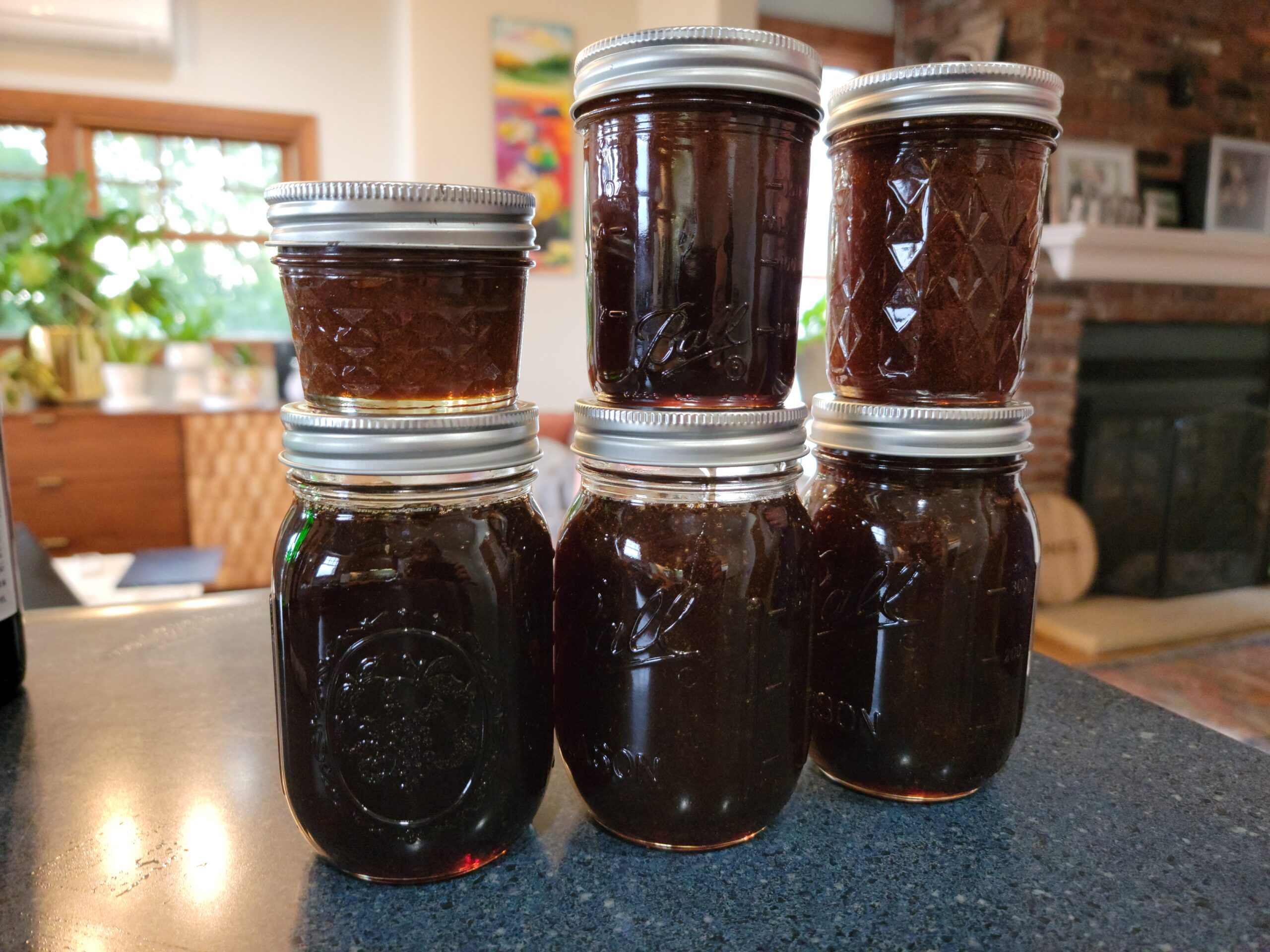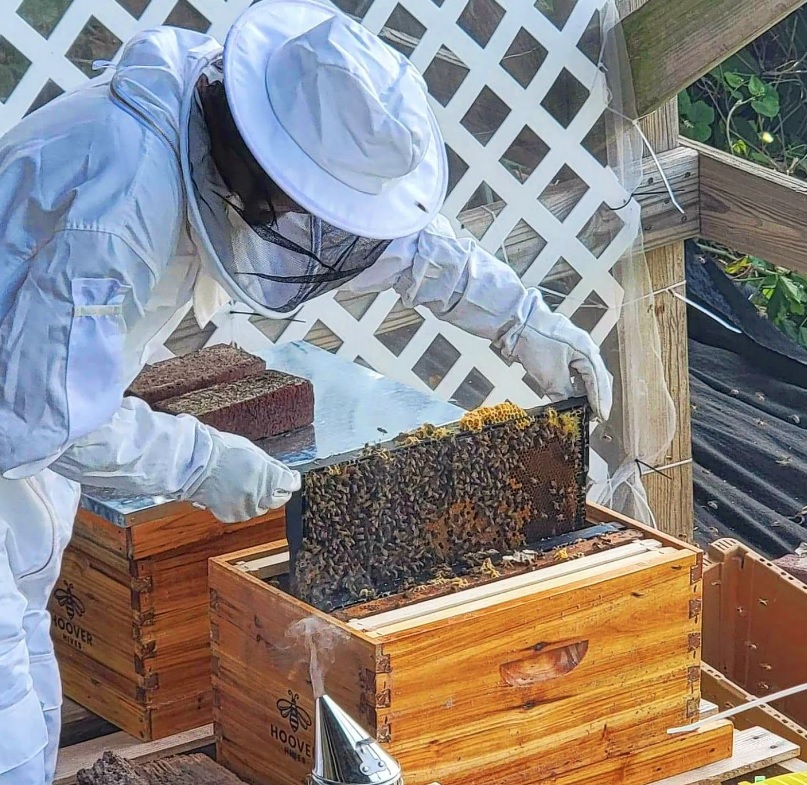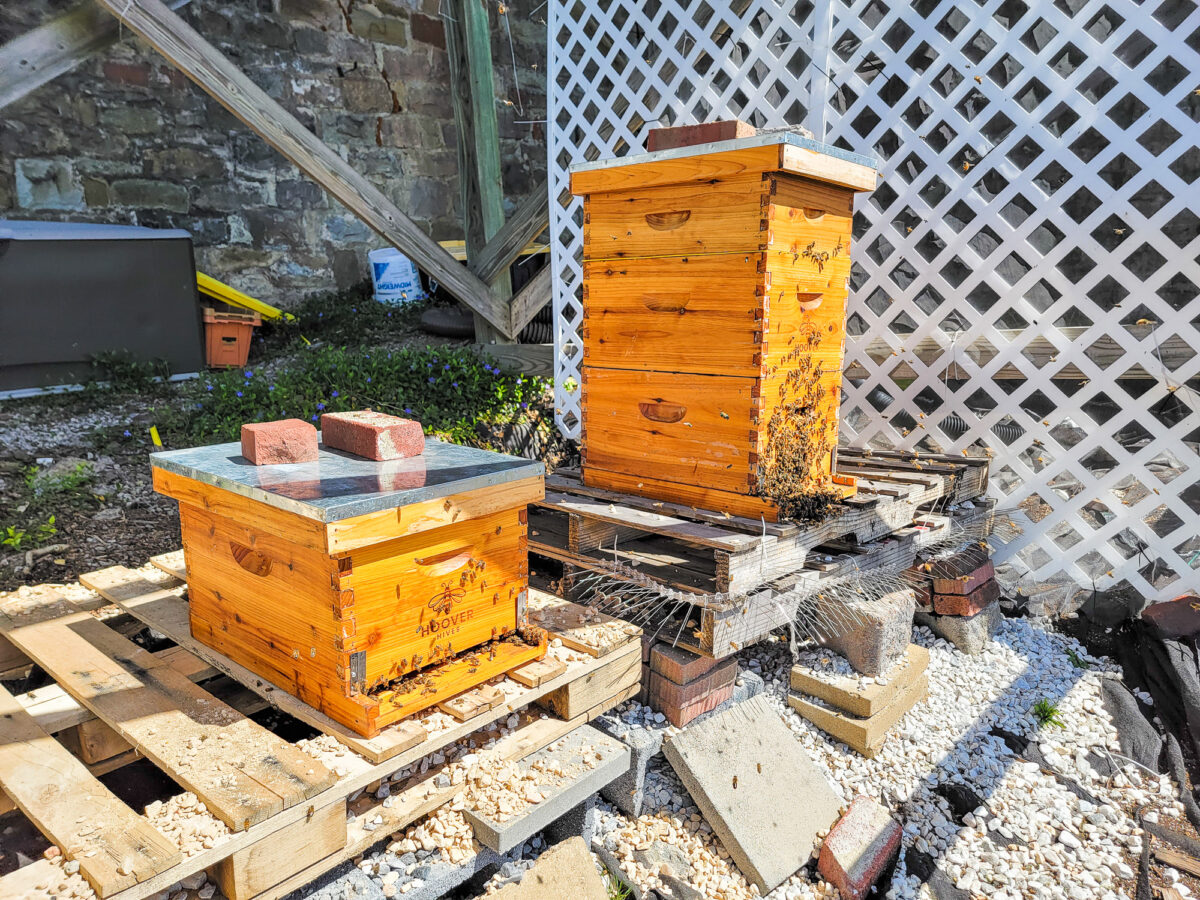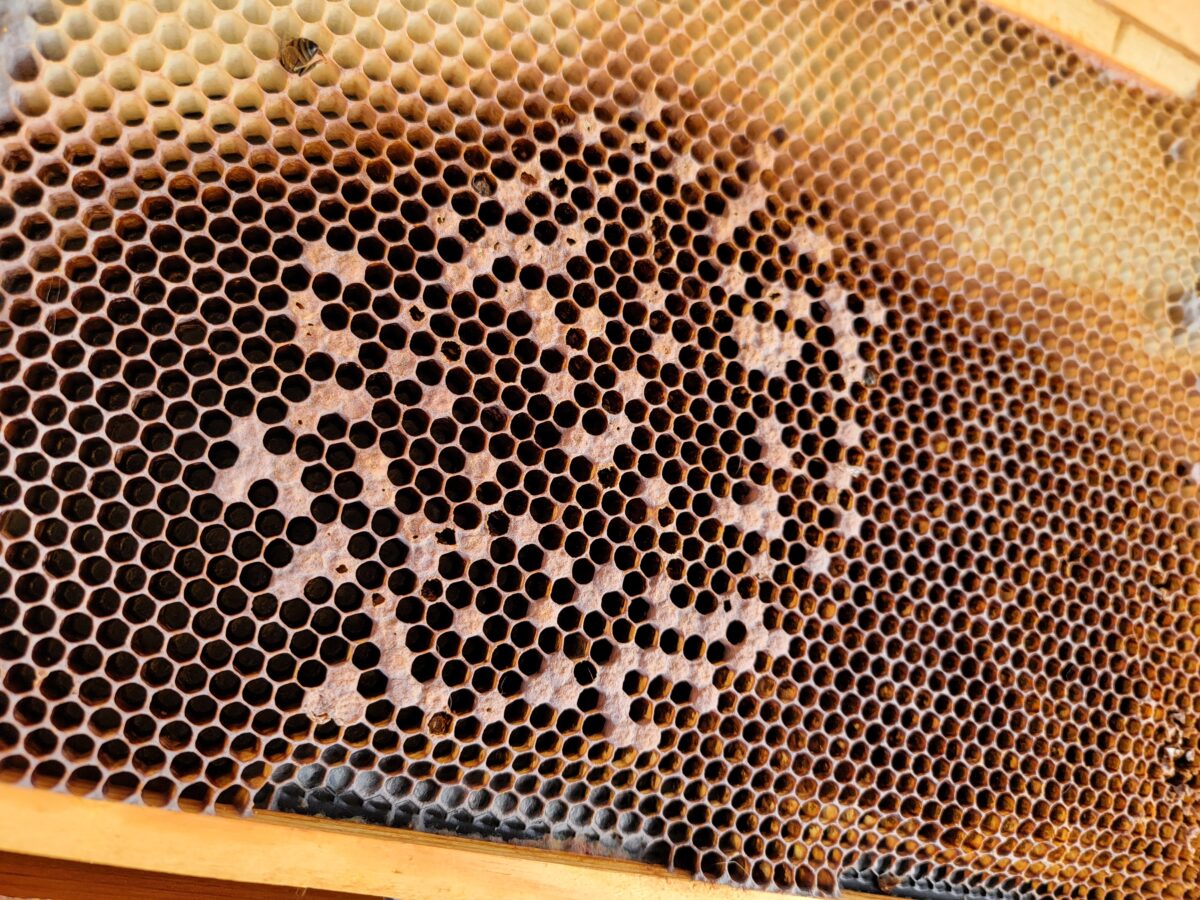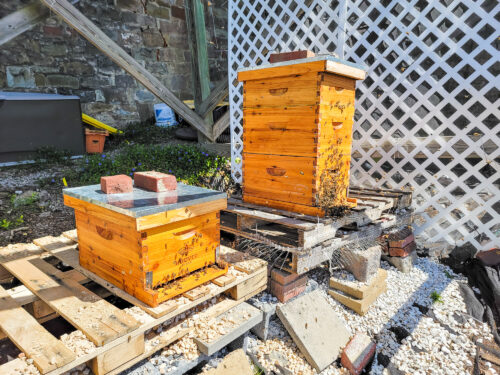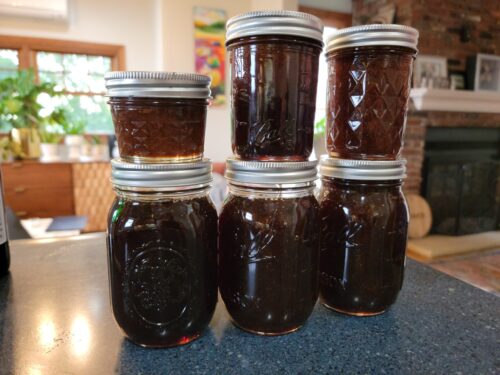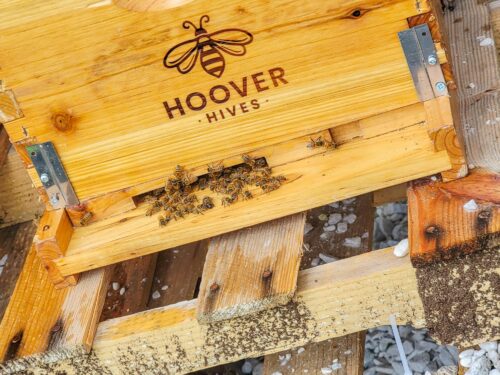Disclaimers: Our site uses demographic data, email opt-ins, display advertising, and affiliate links. Please check out our Terms and Conditions for more information.
When we first got into beekeeping, we knew it would be a multi-year effort before we got an appreciable harvest.
There are many reasons for this, including it taking a while for beehives to grow their populations, draw out comb, and save enough honey stores for winter- not to mention all of the issues that we, as beekeepers, may bring to the table (killing a queen, anyone?). Getting to the point of having a healthy colony with enough honey reserves to take the excess from could take two or three seasons at the best of times.
All of these are highly variable elements. Your bees may draw out combs quickly in year one, but they may be slow in year two. You may not kill a queen in year one, but you may kill two in year three. The issues that plague beehives do not follow a set schedule and could rear their ugly head at any time in your beekeeping journey.
To showcase this, we thought we would start a running log of our beekeeping journey year-by-year- what happened, what issues we ran into, what we did to fix them (if applicable), and what happened after. Many of the the issues we've seen in our hives have been minor, such that we wont be writing long articles on them in the slightest, but felt like this running log would give a good glimpse into the yearly variations and issues we've had all the same.
As we update this article with each passing season, be sure to check back as we update our progress!
Current Status: Beginning year three. We have two hives in winter hibernation that will be split to our max zoned rating of four hives in the spring.
Beekeeping Year One – One Hive Death
For our first year of beekeeping, we started with two hives. It is always recommended to have at least two bee hives for evaluation purposes and to deal with issues, and we are quite glad that we did.
Most of our first season was a stellar success. Our nucs were installed, the bees filled out frames faster than we projected, and we even got a bit of extra production on a couple of super frames we decided to harvest in the fall. (Were we impatient? Sure, but there was also ample stored honey in the deeps.)
Towards the end of the season, we had one queen die. We aren't sure what happened specifically, but it is more than likely that I killed the queen by accident. Committing regicide is, sadly, inevitable- especially for novices. I bought another queen from a local supplier and attempted to introduce one to the hive, but it seemingly did not take- a few weeks later, there was no sign of the queen.
We let the hives sit to see if they would produce a new queen, but we did not have much luck as it was getting quite late in the season. With limited options, we combined our two hives into one via the newspaper method, thus saving the queenless hive's resources. We then froze the remaining brood frames that were not combined (to kill off any wax moth eggs that may be present) and stored them in plastic trash bags in our basement to wait until the next year.
Total Harvest: 8 pounds
Mite Treatment: Formic Acid in the fall only
Beekeeping Year Two – Apiary Expansion and a Lot of Issues
Year two was a challenging year right from the start.
Over winter, we realized we had an issue with the extra frames we froze and stored in our basement. That is to say, although we likely killed all the wax moth eggs that could have been on the frames at the time of hive death, our basement conditions were apparently ripe for- attracting more wax moths. We honestly should've seen that coming. Whoops.
One day, we saw a moth floating around our storage room where the frames were stored. We found a hole in the trash bag, and they were covered with the telltale signs of wax moths. We scraped them off as best we could (losing most of the drawn comb in the process), froze them again, and stored them outside until it was time to install. As it turns out, storing frames outside in a clear plastic bin on our deck (which is raised 30 feet off the ground) is a better idea for us as the combination of freezing conditions and direct sun does wonders to help minimize moth issues.
The one remaining hive with three deep boxes survived during winter, and we had a successful split- the old queen survived in its new hive and the remaining queenless hive from the split reared a new one without issue. We also expanded our apiary with two more hives (bringing our total to our max zoned allowance of four), filled with nucleus colonies from a local apiary, and one queen in the new colony promptly died. The nuc seemed weak when we got it, and the queen did not live much longer after installation for reasons we do not know.
After moving frames from the stronger colonies over, plus shaking some extra nurse bees in, that hive also reared a new queen, and we had four queen-right colonies with about 50% full frames from the previous winter and 50% new frames ready to be drawn out. Any extra drawn frames we had in the original colony were moved to the weaker one, so we had a pretty even split all around. Sadly, at this point, the spring nectar flow had ended, so all four hives had some work to do to draw out the remaining comb over the rest of the season (and replace all that lost drawn comb from the wax moth issue once those frames were added back in).
The hives were humming along until late summer when, during one inspection, I dropped a frame containing the original queen from the split hive (which, according to her marking, suggested she was about five years old anyway). She fell to the ground. I found her, scooped her back up, and put her in the hive, but the damage was done- she died a few weeks later, that hive never reared a new one.
Now we were in a similar situation to the previous year. It was late in the season, it was hard to find a new queen available to purchase, so we combined the extra bees and frames with two of our remaining hives using the newspaper method (three deep each- no extra frames for freezing or storing this time!).
Due to all of the setbacks with queens and lost comb from wax moths, our bees barely touched our supers by the end of the fall nectar flow. One frame had some capped honey, which we harvested at the end of the season since we were taking our supers off anyway, but all the setbacks came together for a fairly lackluster year. Thankfully, all of the deeps were fully drawn out come the end of the season, so we hoped to start year three off with that progress, at least.
Total Harvest: 4 pounds
Mite Treatment: Apiguard in the fall only
Beekeeping Year Three – One Winter Hive Death
We are publishing this article at the start of year three, so we expect more updates as time goes on. But we started winter with three of our four bee hives (two with three deep boxes and one with two deeps).
On one particularly warm winter day at the end of January (about 60 °F), we saw two hives humming with activity of cleaning flights and taking out dead bees, and one hive with none. After inspection on our next warm day a few weeks later, we confirmed that beehive did not make it and it was completely dead. An autopsy suggested possible mite overload or simply the hive absconding. Some capped brood cells were chewed through, suggesting mites overtook the hive and our treatment process was not effective enough, but it is hard to say- there were not that many dead bees present.
Thankfully, most of the honey reserves seemed fine, and because the frames had all been previously frozen in the beeless hive, we packaged them up in clear plastic bins on our deck to save for spring when we split the two remaining hives back into four.
This scenario was upsetting, I'll admit, but as our house is only zoned for a maximum of four beehives, put us in a decent enough position for our spring split- we do not have to worry about what to do with an extra nucleous colony of bees as a byproduct of the split. So at least there's that.
Still, we enter year three with all of our deep frames full drawn out, ample honey reserves ready to go for all hives, and the hope that the weather will behave for the remaining weeks of winter that we can hit the ground running with two hives to split.
But, for now, we wait for warmer weather.
We are hoping for a stellar year three, despite the challenges we've seen in winter. Be sure to check back in the summer and see where the start of the season takes us!
Start an Apiary Today
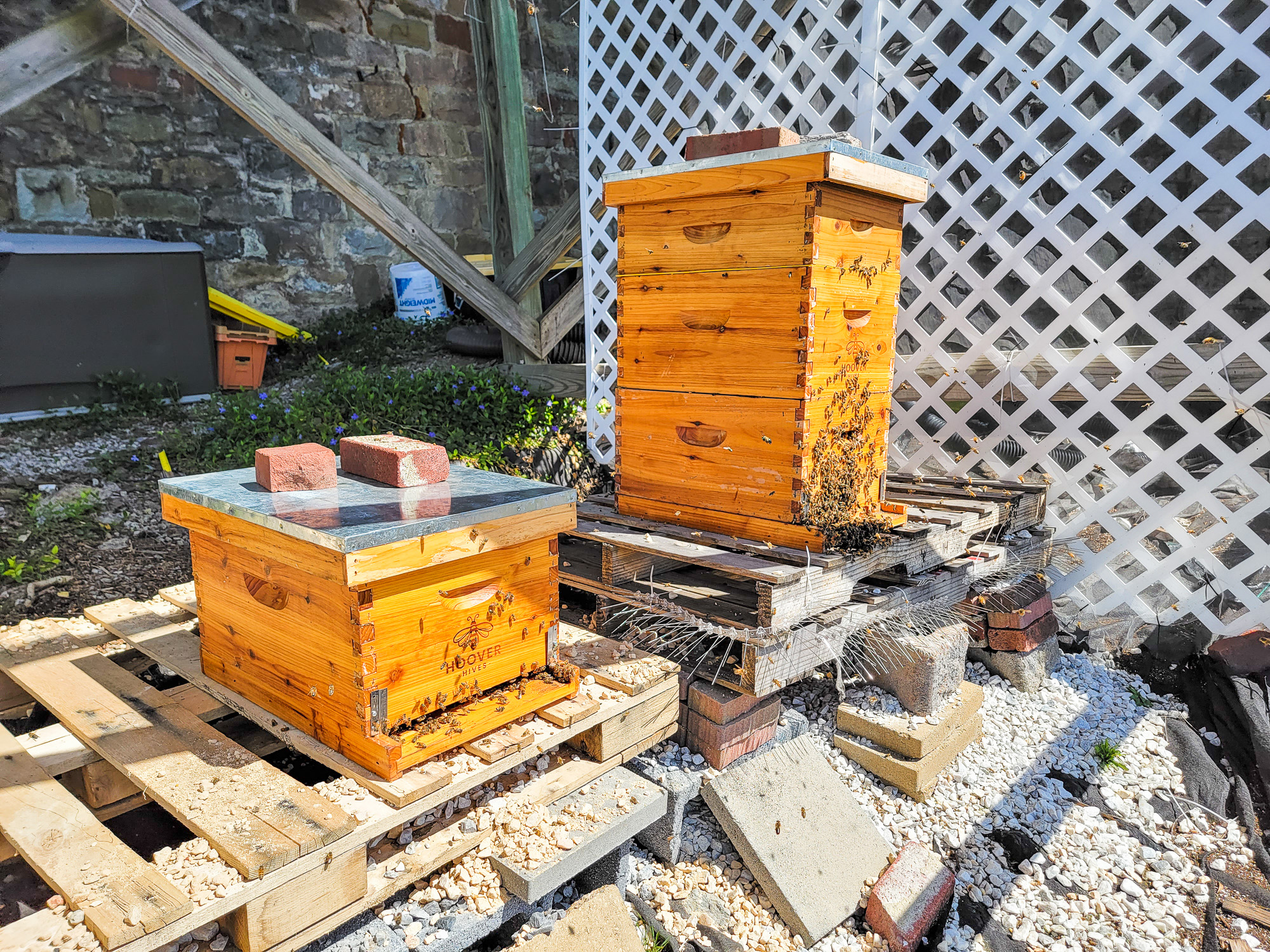
Looking to get into beekeeping? Pick-up preassembled waxed Hoover Hives from Galena Farms. Use discount code HIPSTERHOMESTEADERS to take 5% off your order!

